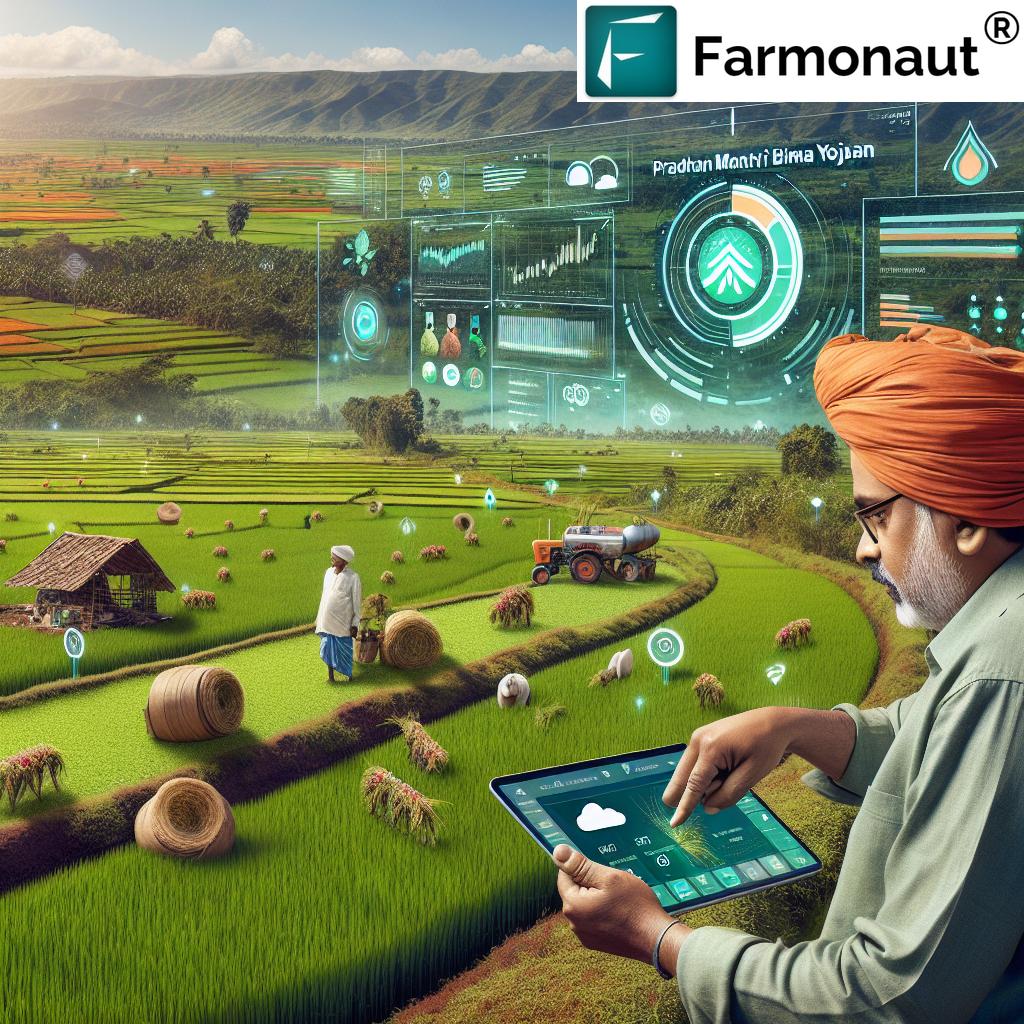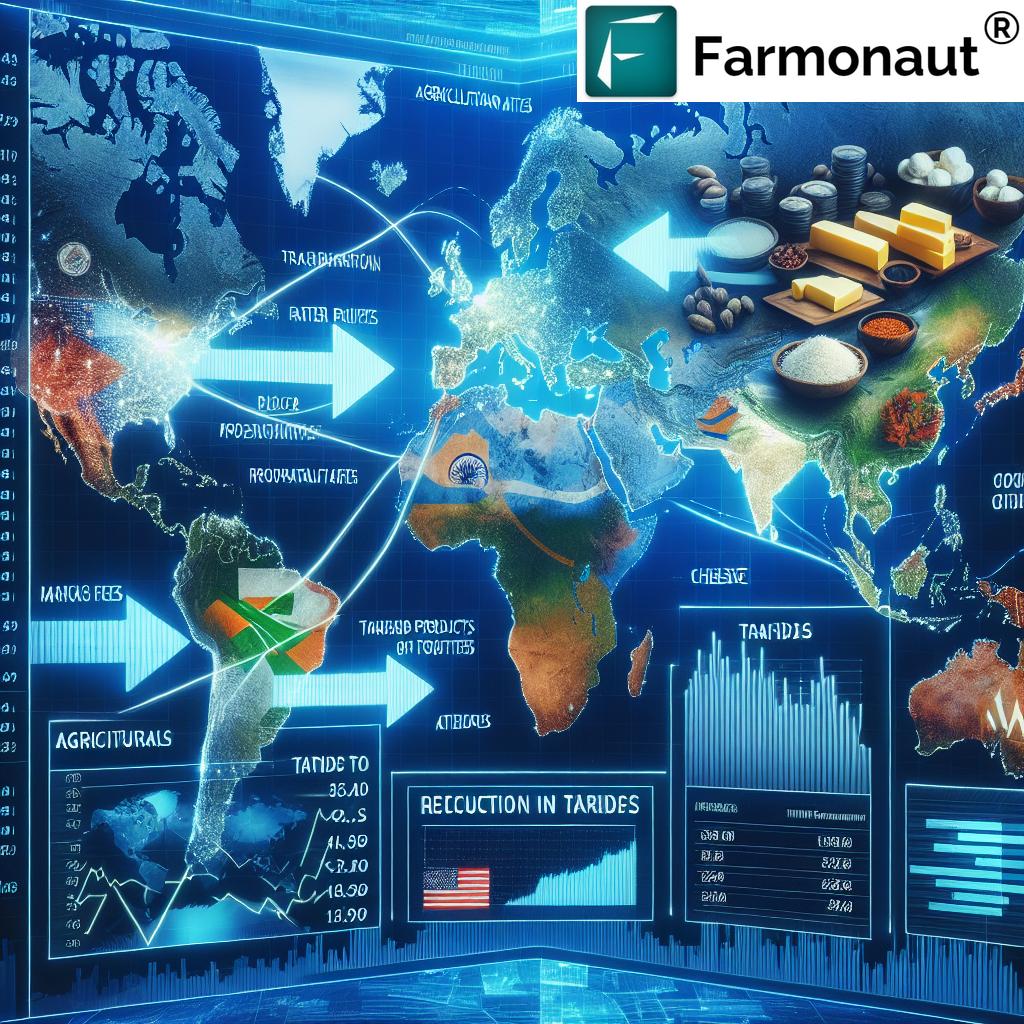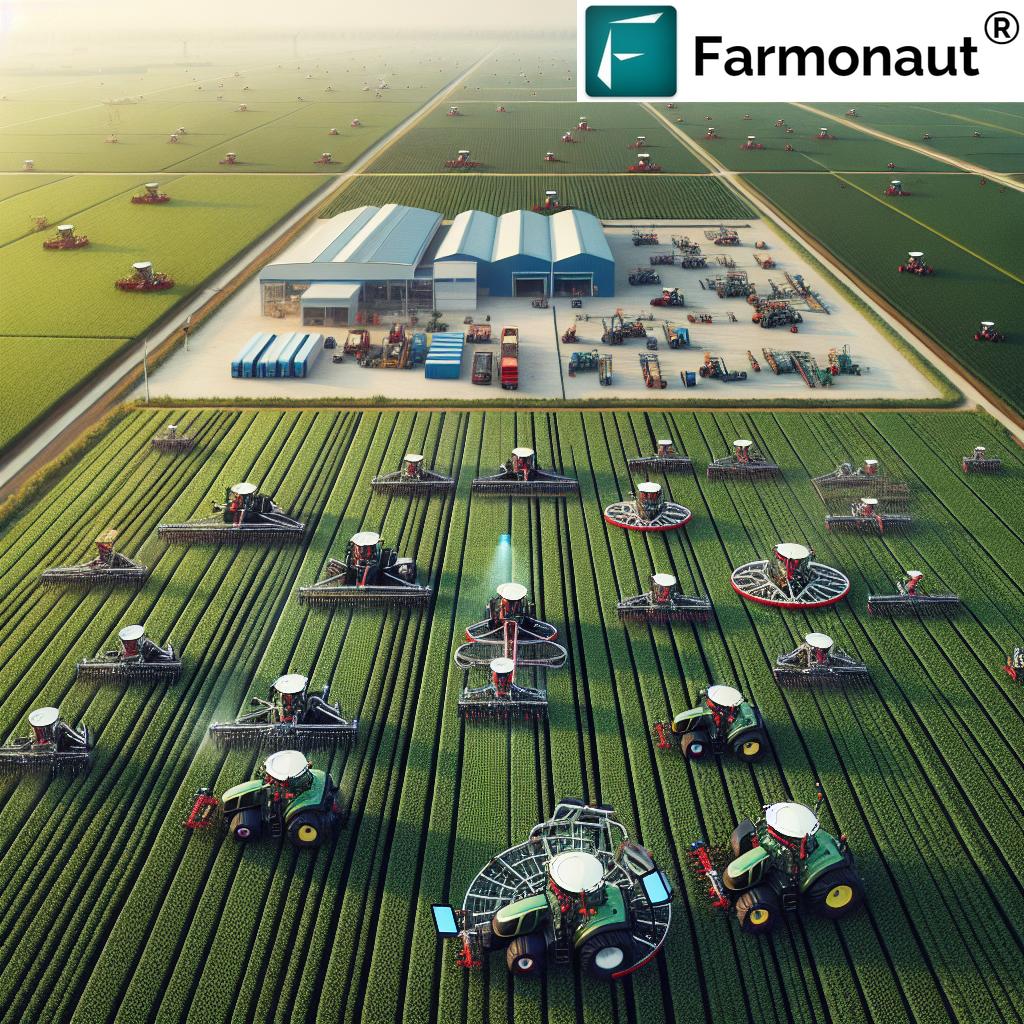Ancient Chinese Terrace Farming & US Farmland Investment: Lessons for Sustainable Agricultural Futures (2025 & Beyond)
Table of Contents
- Ancient Chinese Terrace Farming: Origins, Techniques & Principles
- Environmental Impact & Pillars of Sustainability in Terrace Farming
- Soil Conservation, Water Management & Terrace Farming Today
- Modern Agricultural Investments & US Farmland: Relevance in 2025
- Chinese Investment in US Farmland: Strategic Implications (2025)
- Table: Ancient Chinese Terrace Farming vs. Modern US Sustainable Farmland Practices
- Advanced Satellite & Data Technology: Farmonaut & Agricultural Monitoring
- FAQ: Ancient Chinese Terrace Farming & US Farmland Investment
- Conclusion: Embracing Ancient Wisdom for Modern Sustainability
Ancient Chinese Terrace Farming: Origins, Techniques & Principles
Ancient Chinese terrace farming is one of humanity’s most remarkable agricultural innovations. Originating thousands of years ago, these methods enabled early communities in ancient China, particularly in the mountainous regions of Yunnan, Guangxi, and Sichuan provinces, to transform challenging terrains into highly sustainable, arable land.
Historical Emergence & Ingenious Adaptation
The rugged, steep mountain slopes of southern and southwestern China posed severe limitations for basic agriculture. Conventional flat-field farming was often impossible due to land inaccessibility, excessive runoff, and soil erosion. Here, the ancient Chinese terrace farming method provided a testament to human ingenuity.
Early Chinese farmers understood that by carving platforms—terraces—into steep hillsides, they could both retain soil and water, enabling the cultivation of rice, wheat, and other staple crops. Over thousands of years, this technique evolved into the dramatic ribboned landscapes—series of stepped terraces—that still define parts of Yunnan‘s UNESCO World Heritage Sites and beyond.
Core Techniques of Ancient Terrace Farming
- Carved Platforms: Creating flat surfaces on steep slopes to increase arable land.
- Stone & Earthen Embankments: Terraces were often lined with sturdy boundaries—built from local stone or compacted earth—for structural durability and erosion control.
- Irrigation Networks: Intricate canal systems channeled mountain stream water into and across the stepped fields, supporting challenging farmland irrigation.
- Crop Rotation & Polyculture: Many terraces supported diverse staple crops (e.g., rice, wheat, millet, sweet potato) within sections, boosting resilience and soil fertility.
- Preservation of Soil Fertility: Terraces maintained their productivity by reducing runoff, enabling organic composting and manure amendments.
Preservation & Continuing Legacy
Many ancient Chinese terrace farming regions today remain active and productive, demonstrating the remarkable preservation, durability, and harmony of this cultural heritage. These landscapes stand as a living lesson in sustainable farming design, offering both environmental and economic benefits to their communities across generations.
Environmental Impact & Pillars of Sustainability in Terrace Farming
The environmental and sustainability impact of ancient Chinese terrace farming is multifaceted. These systems were, and still are, viable models for reducing surface runoff, mitigating flooding, retaining soil nutrients, and encouraging agro-biodiversity.
Key Pillars of Sustainable Farming within Terraces
- Soil Conservation: Terraces prevented erosion and retained fertile topsoil by breaking up water flow on slopes. Studies continue to show that soil loss is reduced by an estimated 30% compared to traditional flat field farming.
- Water Use Efficiency: Irrigation channels within terraces maximize water management, distributing water evenly across fields and conserving moisture during dry periods.
- Flood & Drought Resilience: Stepped designs absorb rainfall, decreasing surface flooding and waterlogging risks. In droughts, they retain more moisture in the root zone.
- Biodiversity: Terraces created microclimates ideal for various plants, benefiting pollinators and insect predators, thus strengthening ecological resilience.
For farmers and agricultural businesses targeting modern sustainability and environmental compliance, Farmonaut’s Carbon Footprinting solution helps monitor and minimize their carbon emissions using satellite-driven data, simplifying environmental certifications, and promoting sustainable farming.
Soil Conservation, Water Management & Terrace Farming Today
The relevance of ancient Chinese terrace farming for today’s agriculture is underscored by ongoing soil degradation and climate change. Around the globe, farmland faces mounting pressures from excessive soil erosion, water scarcity, increasing food demand, and rapid environmental degradation.
How Terrace Farming Meets Modern Agriculture Challenges
- Soil Health: By reducing soil runoff and maximizing surface area on challenging terrains, terraces preserve soil fertility and reduce losses of vital nutrients.
- Water Management: Efficient canal and stream channeling systems allow even moisture distribution, crucial in water-scarce zones and a key adaptation for climate variability.
- Crop Productivity: Terraces optimize the use of arable land, enabling higher yields per area, and boosting farm income.
- Climate Adaptation: Terrace farming mitigates the harshest impacts of rainfall, drought, and wind erosion—all of which are expected to intensify by 2025 and beyond.
Terrace Farming & Regenerative Practices in the United States (2025)
As modern US agriculture encounters erosion on hillsides, drought in the Midwest, and growing interest in sustainable investments, concepts from ancient China terrace farming are resurfacing in research and policy discussions. Restoration or adaptation of terraced fields is seen as a powerful approach for soil conservation and boosting climate resilience in farmland across the United States.
For advanced crop plantation or sustainable forest management, Farmonaut’s advisory service leverages satellite intelligence and AI-based recommendations to enhance productivity and environmental stewardship.
Modern Agricultural Investments & US Farmland: Relevance in 2025
A new era of farmland investment and sustainability shapes agricultural landscapes in the United States. Driven by climate change adaptation, global food demand, and growing international strategic interests, both public and private investors are seeking land that integrates ancient lessons of efficiency, like those from ancient Chinese terrace farming, with modern technology.
As we approach 2025, investment in sustainable agriculture is not just about land acquisition—it’s about securing food security, environmental stewardship, and long-term economic returns in a shifting global context.
Why Do Investors Care About Sustainable Farmland?
- Climate Resilience: Sustainable farmland practices adapt to climate volatility, reducing risk for both farmers and investors.
- Soil & Water Assets: Land with good soil fertility and efficient irrigation is more valuable, especially under more extreme and unpredictable weather patterns.
-
Premium Markets & Traceability: Markets now reward food produced with traceable, sustainable practices.
Farmonaut’s Blockchain-Based Traceability Platform (read more) enables US and global farms to build consumer trust and access premium buyers. - Financial Product Diversification: Satellite-driven crop loan and insurance verifications benefit both farmers and agricultural investors by minimizing fraud and de-risking financial exposure.
Chinese Investment in US Farmland: Strategic Implications (2025)
Chinese investment in US farmland is a defining story in the global food and economic landscape in 2025. As food supply chains grow more international, Chinese investors have increased acquisitions of agricultural land in the United States, focusing on commodity crops like corn, wheat, and soybeans.
Why the Interest? & What Does It Mean?
- Food Security: China faces mounting pressures from population growth and climate change affecting domestic crops, increasing its interest in international farmland.
- Economic Diversification: US farmland offers stable, long-term returns and portfolio hedging for Chinese investors.
- Technology Transfer: Capital from investments helps bring advanced farming practices, precision tech, and sustainability know-how to US farms.
- Policy & Sovereignty Debates: Rising foreign investment prompts policy discussions on land sovereignty, food independence, and regulatory oversight, mirroring international trade dynamics.
- Sustainability & ESG Demands: Investors, regulators, and buyers increasingly demand sustainable, traceable, and certified agricultural methods. Many Chinese investors look to ancient and regenerative farming principles—like those from ancient Chinese terrace farming—to inform profitable and responsible land management in the US.
Efficient, scalable farm management is key to both local and international farm investments. Farmonaut’s Fleet Management tools empower agricultural operations to optimize logistics and resources with real-time satellite & AI insights, reducing operational costs and improving overall productivity.
Comparative Table: Ancient Chinese Terrace Farming vs. Modern US Sustainable Farmland Practices
| Farming Practice | Time Period (Estimated) | Core Techniques | Estimated Soil Erosion Reduction (%) | Water Conservation Efficiency (Estimated %) | Sustainability Impact | Notes on Investment/Adoption (2025 impact) |
|---|---|---|---|---|---|---|
| Ancient Chinese Terrace Farming | Begins ~2,000 BCE – present in regions like Yunnan, Guangxi, Sichuan | Stepped terraces; stone/earthen embankments; irrigation canals; polyculture; flood/drought adaptation | ~30% reduction vs. flat areas | 25–40% increase (water conserved via leveled flow & infiltration) | Very high: Maintains soil fertility, supports biodiversity, climate resilience | Model for global regenerative and sustainable systems; principles inspire new investments globally |
| Modern Conventional US Farming | 20th–21st century across US heartlands | Mechanized tillage; mono-cropping; chemical inputs; flat field irrigation | Low (often negative if not no-till) | Moderate; significant losses in drought/flood | Mixed: High yield potential but with soil/environmental degradation risks | Loses value/investment appeal if sustainability goals unmet |
| Regenerative/Sustainable US Farming (2025, with Chinese investment highlighted) | 21st century, expanding rapidly—esp. 2020s | Cover cropping, no-till, integrating traditional/terrace design in hilly/marginal areas; satellite & AI-based management, blockchain traceability | Up to 20–35% reduction with adaptive practices | 30%+ improvement vs. conventional in managed areas | High: Resilient, profitable, climate-smart, meets ESG standards | Chinese investment in US farmland exceeds $2 billion (2025); focus is on tech-enhanced, sustainable models blending ancient and modern |
Advanced Satellite & Data Technology: Farmonaut & Agricultural Monitoring
To achieve the kind of land management efficiency and alertness to soil and water variability found in ancient Chinese terrace farming, modern agriculture increasingly relies on advanced tech. Satellite imagery, AI analytics, and real-time insights allow farmers and landowners to make decisions with a precision unmatched in history.
As a pioneering satellite technology company, we at Farmonaut provide highly accessible, affordable solutions for agricultural monitoring, soil health assessment, and resource management. Our system helps users around the world—in farming, mining, infrastructure, and government—to implement and monitor sustainable practices, boosting yield and environmental responsibility.
- Key Farmonaut Offerings for Agricultural Land Managers and Investors:
- Satellite-Based Monitoring: Get real-time multispectral imagery on vegetation health (NDVI), soil conditions, and more. Try it on our Web or Mobile App.
- AI Advisory & Fleet Management: Our Jeevn AI delivers live weather foresight and tailored farming strategies for better operational efficiency. Learn more about Fleet & Resource Management.
- Blockchain Traceability: Farmonaut provides end-to-end traceability along the agricultural supply chain to verify sustainability and improve market trust.
- Real-Time Environmental Impact Monitoring: Services like carbon footprinting help you track emissions and demonstrate sustainable stewardship.
- API Access: Integrate remote sensing, crop health insights, or fleet management into your own tools using the Farmonaut API (with Developer Docs).
If you manage large, complex investment-linked farmland in the US or globally, Farmonaut’s Large Scale Farm Management app delivers powerful monitoring and operational tools for agricultural portfolios.
Subscribe for Affordable, Scalable Satellite Solutions
FAQ: Ancient Chinese Terrace Farming, Sustainable Agriculture & Farmland Investments
What is ancient Chinese terrace farming and how did it originate?
Ancient Chinese terrace farming is a method whereby farmers carve flat, stepped platforms (terraces) into steep mountain slopes to maximize arable land, conserve soil and water, and enable the cultivation of rice, wheat, and other crops in otherwise challenging terrains. It originated over 2,000 years ago in China’s mountainous regions—most notably in Yunnan, Guangxi, and Sichuan provinces.
Why is ancient Chinese terrace farming relevant to global agriculture in 2025?
The principles of terrace farming—soil conservation, water management, and maximizing land efficiency—address many of the same environmental and economic challenges facing global agriculture today, such as climate change, soil degradation, and increasing food demand. These ancient practices inspire modern sustainable investment and land management strategies around the world, including in the United States.
What is the connection between Chinese investment in US farmland and ancient terrace farming?
Chinese investment in US farmland is partly motivated by a desire for food security, economic diversification, and sustainable agricultural growth. The values of terrace farming—efficiency, resilience, environmental harmony—inform some of the sustainability criteria that international investors prioritize when selecting land and supporting new farming methods.
How do modern technologies, like satellite and AI, support sustainable farm management?
Technologies like those provided by Farmonaut (satellite imagery, AI-based insights, blockchain traceability) enable farmers and landowners to monitor soil and crop health in real time, optimize resource management, track environmental impact, and ensure that sustainability goals—including those modeled after ancient terrace farming—are met across large, varied landscapes.
What US regions could benefit most from terrace-inspired land practices?
Any hilly or erosion-prone area—such as the Appalachian foothills, Pacific Northwest, and parts of the Midwest—stands to gain soil, water, and productivity benefits from adapting terrace farming principles. With climate change increasing rainfall extremes, these methods are gaining new attention in US policy and investment circles.
How does Farmonaut help implement sustainability at scale?
We at Farmonaut support global agricultural stakeholders—farmers, businesses, governments, and investors—by providing cost-effective, scalable satellite solutions for real-time land monitoring, yield optimization, and environmental compliance at both small and large scales.
Conclusion: Embracing Ancient Wisdom for Modern Sustainability & Investment
Ancient Chinese terrace farming demonstrates that even the world’s most challenging terrains can become productive, resilient sources of food and prosperity when guided by thoughtful, sustainable management. As we enter 2025 facing climate change, soil degradation, and soaring food demands, the lessons of the past are more relevant than ever for investors, farmers, and land stewards—whether in China, the United States, or globally.
The growing Chinese investment in US farmland underscores how historical principles of efficiency and conservation can guide transformative strategies for sustainable growth, environmental protection, and long-term food security. Meanwhile, modern tools—such as Farmonaut’s satellite tech platform—make it possible to adapt the wisdom of ancient China terrace farming with science-backed precision at a scale never before seen.
By integrating the ancient with the modern, adopting technologies that ensure environmental and economic sustainability, and remaining mindful of the strategic and policy implications of international agricultural investment, we can collectively build an agricultural future that honors both the ingenuity of our ancestors and the needs of generations to come.











